An absolutely innovative festival with a focus on the audience and the role of the spectator, the GIFF returns from November 3 to 12 for its 29th year, with an immersive section including 28 works, including ten world premieres.
An event that many have been waiting for, GIFF is a festival that really puts the value of stories at the centre, showing the many ways in which they can be told, without shying away from comparing different technologies.
And once again it is accompanied by the Geneva Digital Market, which, with its numerous talks and two immersive sessions focusing on international and Swiss productions, opens up reflection on the main challenges of immersive technologies and audiovisuals today, and also tackles head-on the age-old problem of the distribution of works.
.We discussed the upcoming edition with its executive and artistic director Anaïs Emery and this is what she told us.
Cover: THE EYE & I, Jean-Michel Jarre & Hsin-Chien Huang
Storytelling at the heart of the audiovisual world
ANAÏS EMERY – What unites the various sections of GIFF, the red thread of this festival, is the simplest, yet most important thing: humanity’s need for storytelling. The raison d’être of our event, its mission, is to look at contemporary audiovisuals and figure out which stories are the most innovative, which offer the greatest opportunities in terms of freedom of speech, which allow us to elevate humanity and tell new things about it. Finding new voices, new visions or even new ways to tell stories, like interactivity and immersivity.
We are interested in new technologies precisely from this point of view: not as ends in themselves, but as a new tool for storytelling and sharing narratives that are fundamental to understanding a world that is becoming more and more complicated to analyze, because of the amount of information we have at our disposal.

Therefore, storytelling is always at the center of our choices even in terms of lineup, precisely because of how it allows us to represent the world in its greatest diversity.
But, as mentioned, we also want to look at diverse voices: the role of a festival is also to bring out perspectives that are, especially today, not easily accessible to the public. Then again, the particularity of our immersive program is that it has always been open to the public. In many festivals-and I do not say this in a critical sense but merely to emphasize the difference-immersive or innovative programs are mostly open to professionals. Instead, the vision that we at GIFF have is that the audience is also to be considered an expert: an expert of themselves, as human beings, but also an expert of audiovisuals, which they constantly enjoy.
The complexity of a convergent festival
A. E. – GIFF brings together all ways of telling stories, even competitively comparing (see the Convergent competition: Future is Sensible) different media.
It is complex to work in these terms, especially since our selection constantly looks for original or inspired visions of the future and audiovisual works that have a particularly innovative production. So we look at works that are themselves complex to find.
To then put them together in the same festival is a very bold step, in my opinion. Yet we do it because we believe that in order to advance a culture of audiovisuals we have to go further, to develop a competition that puts the differences together and where the comparison is made not on the type of technology used but on the quality of the work measured in its ability to best express specific visions of the future.
Sometimes a film can succeed better at the task than an immersive work, sometimes a series is more effective. I would say that this is the theme that unites the different works in our lineup. And it is always interesting to observe the jury’s attitude to this set of submissions.
The raison d’être of our event, its mission, is to look at contemporary audiovisuals and figure out which stories are the most innovative, which offer the greatest opportunities in terms of freedom of speech, which allow us to elevate humanity and tell new things about it. Finding new voices, new visions or even new ways to tell stories, like interactivity and immersivity.
–
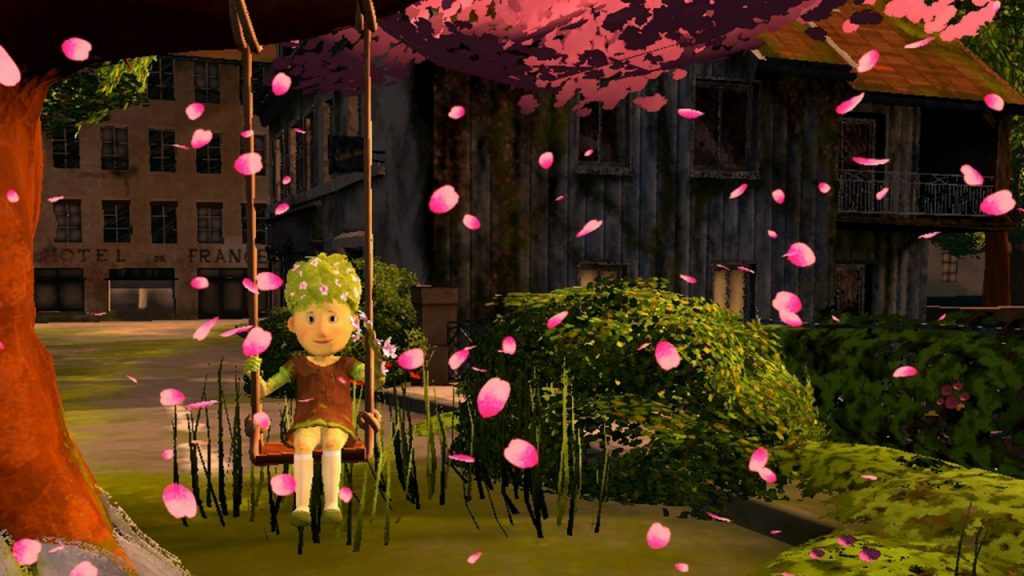
An innovative approach to the jury system
A. E. – At GIFF we have a fairly innovative jury system. For films, there is only one person with a significant role in the field: they are joined by university students who study theory but also practice film in Switzerland. This is because it is really important for us to integrate the vision of those already working today with the vision of the directors, journalists, producers of tomorrow. Then, of course, we also want to be more inclusive in generational terms, because the incoming generation, which is often considered very little, has viewpoints that are of great value.
For series we have an audience jury, but not one that collectively approves or disapproves of the works: through a call for application we choose cinephiles and they see all the series in the theater and discuss them as a professional jury would.
Finally, for the immersive and Convergence Competition we look for XR creators from different areas. So it is diversity that drives our choice.
In fact, at the heart of our festival is really the desire to create a connection, to create a platform where all audiovisual professionals can come together. My impression is that today the world of series does not talk to the world of cinema, which in turn is not very in touch with the immersive world. There is quite a schism, especially at the level of generations. Yet I think a critic with 40 years of experience has so much to give but also to receive from a person working in new technologies or a student. We should exchange our expertise so much more!
This is precisely why we have so many Q&As at GIFF and why we are generally very attentive to the relationship between creators and the audience.
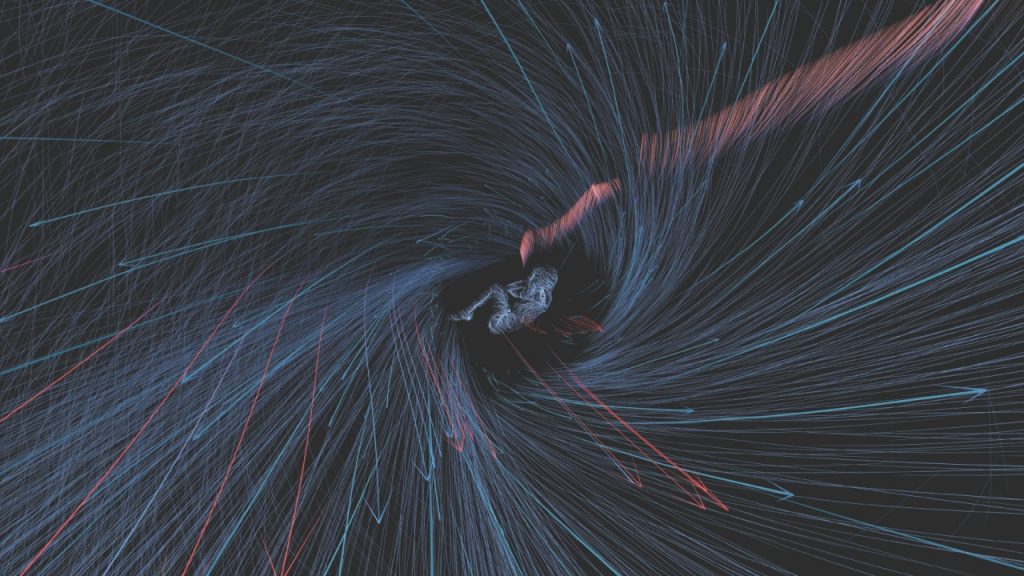
To advance a culture of audiovisuals we have to go further, to develop a competition that puts the differences together and where the comparison is made not on the type of technology used but on the quality of the work measured in its ability to best express specific visions of the future.
–
Discovering the Geneva Digital Market
A. E. – Fundamental is also the Geneva Digital Market, which is really the beating heart of our organization, because it allows us to create a formal platform in which to address all the major challenges of contemporary audiovisuals.
Every year we invite guests who work in the audiovisual field-not necessarily just in new technologies-to open interesting discussions with them on the most significant issues and to discuss the direction to take in audiovisual.
This year we have, among others, a talk on Marchine Learning that will confront very different figures: Cristóbal Valenzuela, co-founder and CEO of Runway, Nora Nahid Khan, who is a writer, editor and curator of the Biennale de L’Image en Mouvement, 2024, Douglas Edric Stanley who belongs to the academic world with whom to have a discussion more directed to the ethics of new technologies, and Simon Senn, Swiss artist.
Besides these debates, the market also wants to offer concrete opportunities to artists. This is done through two co-production sessions that we organize, one at the European level – the XR Co-production Market, for the co-production of XR projects in development – and one dedicated to Swiss artists that has a somewhat broader scope of digital creation. It is the Swiss Interactive Session, where we connect artists of completed works with international curators, from the museum world, from other festivals, from international promotion institutions, from film funds. These two days are dedicated not to the industry in the global sense, but to promoting works and supporting individual artists.
In itself, ours is a small market, with 15 international works participating and 10 for Switzerland, but it is already the seventh year that we are running it and we want to address the problem of a digital space that is still not yet structured clearly and equally across all countries. We really need to help artists and the development and distribution of their artworks.
Challenges of the immersive field today
A. E. – This is something that the whole immersive industry should be addressing: we have many meetings a year during markets or major festivals where we deal with the need to structure the distribution of works and we discuss how to get in touch with our audience, especially in relation to the artistic sector. After all, the more commercial immersive sector and the educational sector have found their way, but the more artistic one still needs perspectives.
What I can speak most confidently about is what challenges I recognize in our Festival: for my team, one of the most important ones, in particular as selectors, is to have as broad a geographic vision as possible. We have access to works that come from different countries, but we have to seek more and more geographic diversity. This is one of our goals for the future: to discover new territories.
(With the Geneva Digital Market) we want to address the problem of a digital space that is still not yet structured clearly and equally across all countries. We really need to help artists and the development and distribution of their artworks.
–
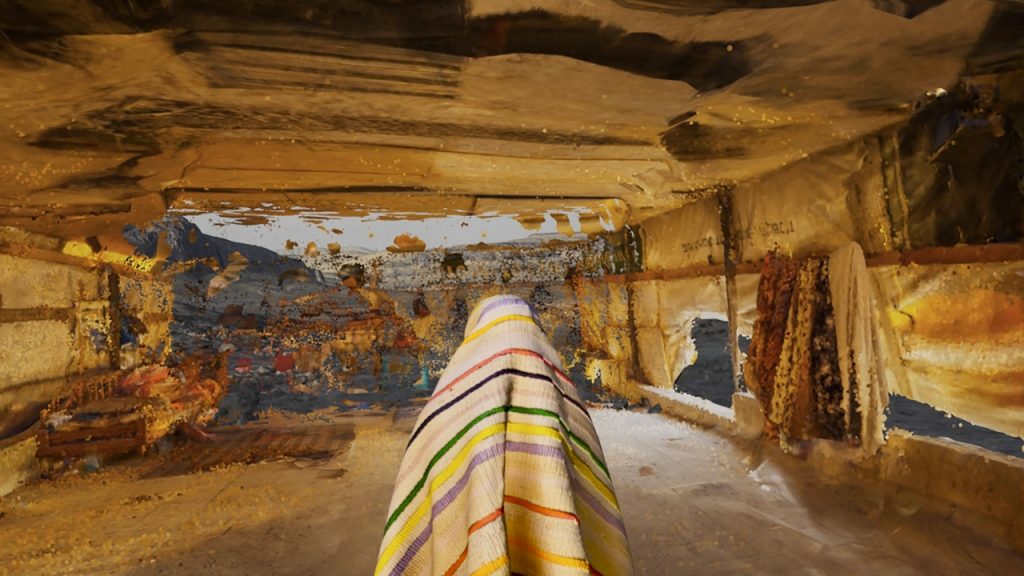
The other issue we feel the need to address is the installation element of the works, which requires more and more resources. We really want to support the idea that the works we select in our Festival can be installed in accordance with the vision of the authors.
Of course it is not always easy: we need to provide suitable spaces and discuss very carefully with the different teams that are behind the development of the work. But it is still a very important effort that we want to make and that is precisely why we show more and more installations at GIFF.
We are obviously fascinated, however, by all other formats as well, not just installations: 360 movies, VR cinema… We want to offer different possibilities for audience accessibility.
How to visit GIFF: the Territoires Virtuels
A. E. – We have special projects that can be accessed with a ticket. The Eye and I by Jean-Michelle Jarre and Hsin-Chien Huang, In Pursuit of Repetitive Beats by Darren Emerson, and Wallace & Gromit in The Grand Getaway by Bram Ttwheam and Finbar Hawkins. They all have a certain length and therefore we have given them their own space.
The other proposals are part of a large exhibition that also includes installations. To visit this exhibition we have four virtual paths: the Territoires Virtuels I, II, III and IV. Tulpamancer by Marc Da Costa and Matthew Niederhauser is part of Territoires Virtuels I and requires ticketed access.
The other three routes also require a ticket that gives access to a specific group of works: the routes have been put together with a sense of balance, so there are always one or two large installations, there are different themes that are discussed, there are different artistic sensibilities (Territoires Virtuels II, Territoires Virtuels III, Territoires Virtuels IV).
With a ticket you can access these spaces for 2 and a half hours, calculated to give the user a chance to see the whole thing but also to take breaks between works. In addition, there is always a staff person per work who helps with onboarding and explains to the audience what the experience will be like, answering their questions.
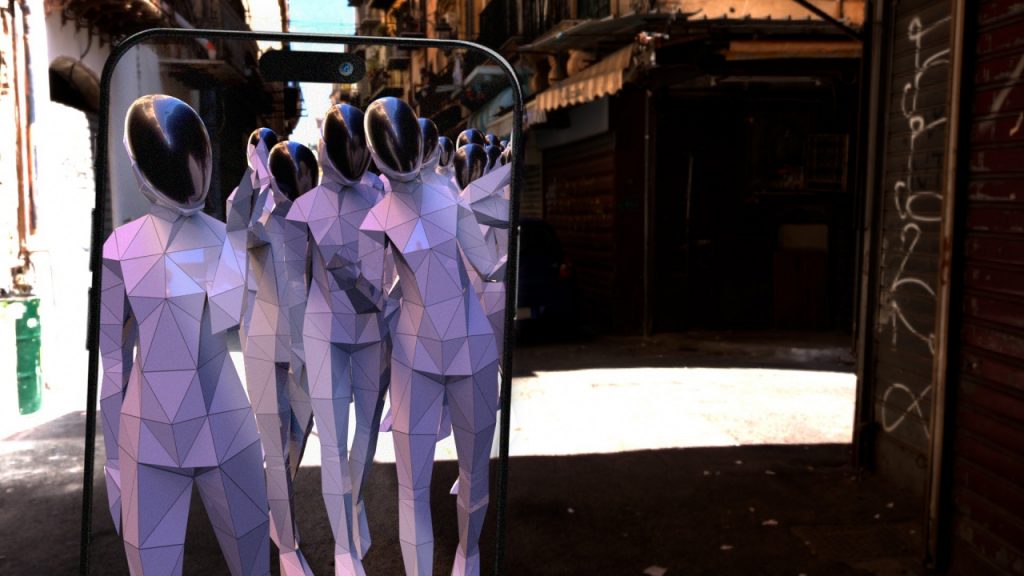
Immersive production between audience perception and supporting policies
A. E. – The immersive section is where we have had the greatest progression of audiences. More and more are coming every year. I think people are learning to leave behind their technological fears, the fear of the headset, and the relationship with the artworks is becoming easier. Over the years, GIFF is becoming a more fluid event in this respect.
However, if we compare Switzerland to France, I have to say that we lag behind here in terms of public policy. There are few events and few spaces to experience these technologies, particularly that appeal to a young audience.
I’m mentioning this, though, because I am very proud of it: we recently bought a 25-square-meter caravan, air-conditioned and with heating for the winter, made it a place to experience VR, and now we are about to hit the streets of Switzerland to propose this technology to everyone… in schools, in town squares, to elderly people in their homes!
Getting back to the politics, I think one of the difficulties is that in people’s minds, immersive is something they automatically associate with video games and movies. People have a hard time framing it; it’s too complicated to put it “in a box.”
Now, however, there is really a willingness in our country to make progress on the political level as well. The Pôle de création numérique aims to create a more lasting, more virtuous ecosystem for digital creation, and GIFF is part of that. There will be fundings for the production of works but also various initiatives will be activated to strengthen the structuring of the industry. A very positive step! I hope this hub will be able to show how important it is for us to move forward.
However, the connection with the public remains something extremely important to me: there is a need to offer the viewer something different from the ultra-commercial proposal of GAFA, which in itself is not enough to democratize immersive. We need to show that independent, local production is also brilliant, exciting, easy to access.
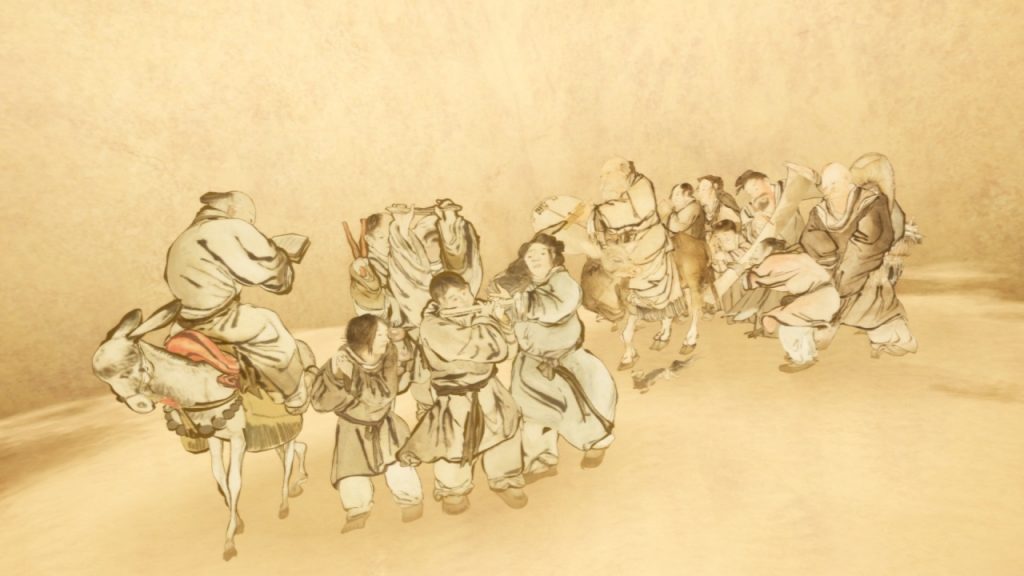
On the democratization process of the immersive field
A. E. – I can only hope that we are at the beginning of this democratization process. There is potential for development. We obviously need to have a policy at the European level for the circulation of works, it is an issue that has to be solved at the local, national but also, in fact, European level. I also think that technological development will help the audience: it will be possible to have access to hardware in a cheaper and easier way. All this will certainly help.
And let’s not forget the role of festivals. They are key venues! But certainly a structural development of the industry is necessary and I think there will be big changes in the near future. Distribution is key, and a number of companies have emerged that want to deal with that. We will see how this will help audiences better access immersivity.
The connection with the public is extremely important to me: there is a need to offer the viewer something different from the ultra-commercial proposal of GAFA, which in itself is not enough to democratize immersive. We need to show that independent, local production is also brilliant, exciting, easy to access.
–
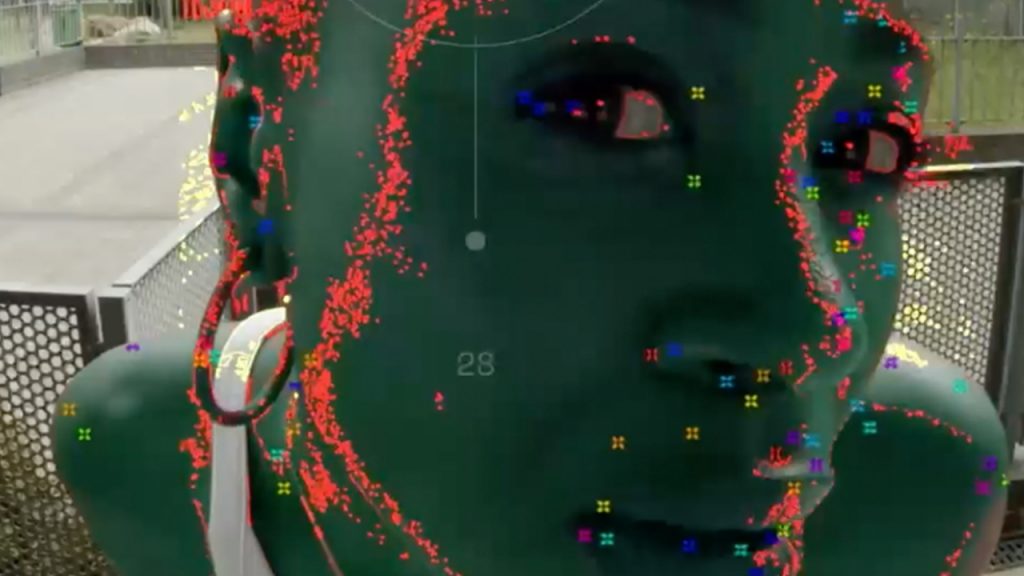
A no-spoilers look at the lineup
A. E. – We have been very lucky this year because we really have a great diversity of works in the lineup that represent the variety of immersive creation today.
A person who comes to GIFF can see great installations by well-known artists like Jean-Michelle Jarre or Darren Emerson and works of studios that are in pole position in the immersive world like Atlas V. They can also enjoy different but equally interesting works such as Consensus Gentium, which I find absolutely brilliant and must be tried at all costs: a work of perspective, which raises the alarm about the society of control.
Then there are pieces that look at artificial intelligence such as Tulpamancer and do so in a way that facilitates discussion with people and help them understand how this technology can be used in the artistic domain. We also have mixed reality and augmented reality experiences, such as Them. Us. Me, which is a Swiss work created by Laurent Rime and Léo Thiémard.
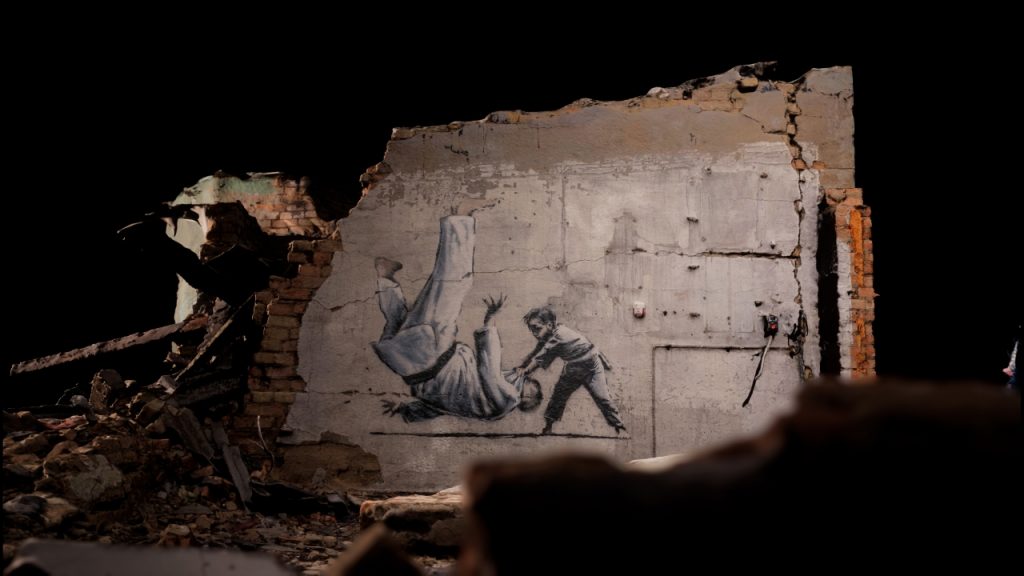
There is also more classical virtual reality-although it is unfair to use the term “classical” to describe virtual reality, which is always super innovative. Finally, we also have more artistic installations, experiences that are more digital than immersive.
In terms of topics, a very strong theme that we also take up in the Geneva Digital Market is that of testimony. We have several works that present people’s testimony about experiences related to wars or conflict zones, such as Murals, Fresh Memories: The Look, Remember This Place: 31°20’46”N 34°46’46”E, Draw for Change: Existimos, Resistimos, which a work that is interested in the fate of women in Mexican society. It is interesting to see how these technologies are used to collect and share testimonies about conflict situations and intense emotions.
In the lineup you also find Shirin Neshat’s The Fury, another strong work connected to this topic. So I would say this is the first theme. The other theme that remains important is the one, already mentioned, of AI as a subject of reflection, sometimes of fears, of ethical critique but that is totally fair to use.
We also have a very educational work like Eternal Walkers, which transports the viewer to an 18th-century classical painting, The Nineteen Taoist Immortals by Kim Hong-do, and it is a wonderful experience. On the art history related topic you also find Archi VR: The Villa Savoye, which reflects on architecture and is really significant as a work.
GIFF will open on November 3. You can buy tickets for the works in the immersive section on the dedicated page of the website. For those curious to find out more about the lineup, check out the articles published so far on XRMust:
FINALMENTE EU (FINALLY ME) by Marcio Sal
IN PURSUIT OF REPETITIVE BEATS by Darren Emerson
TULPAMANCER by Marc Da Costa, Matthew Niederhauser
WALLACE & GROMIT: THE GRAND GETAWAY by Bram Ttwheam, Finbar Hawkins

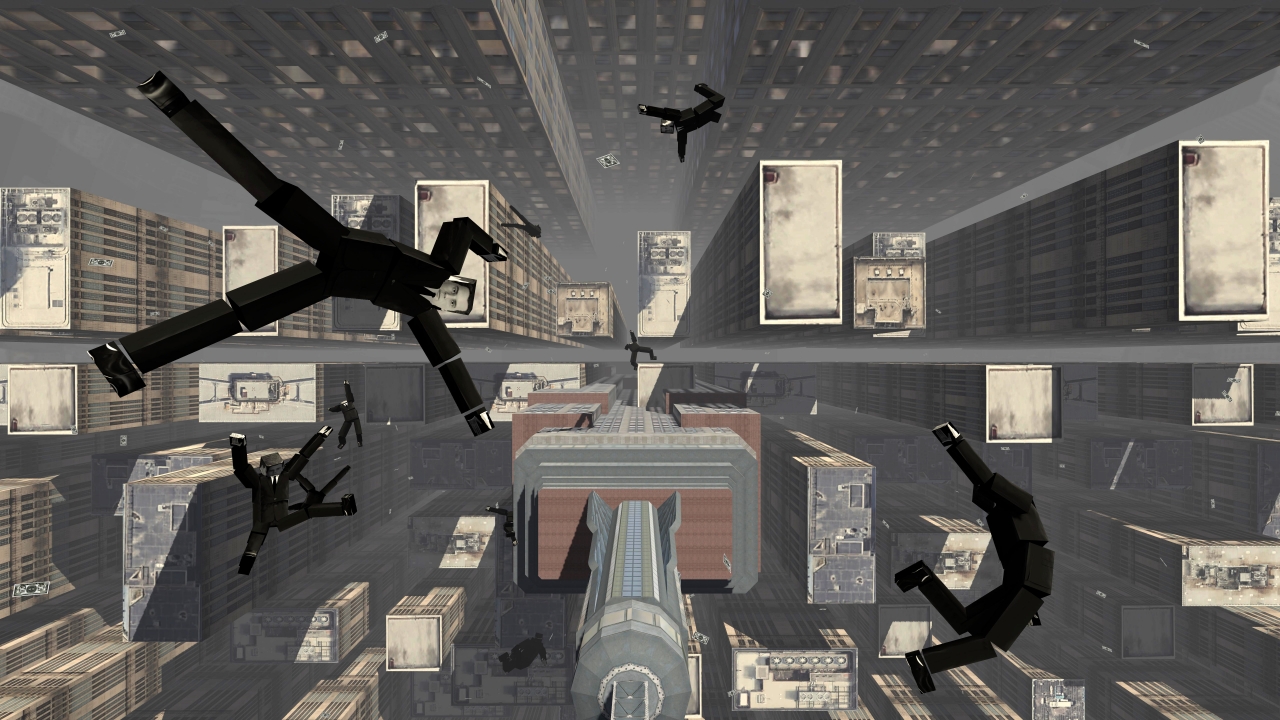

Leave a Reply
You must be logged in to post a comment.